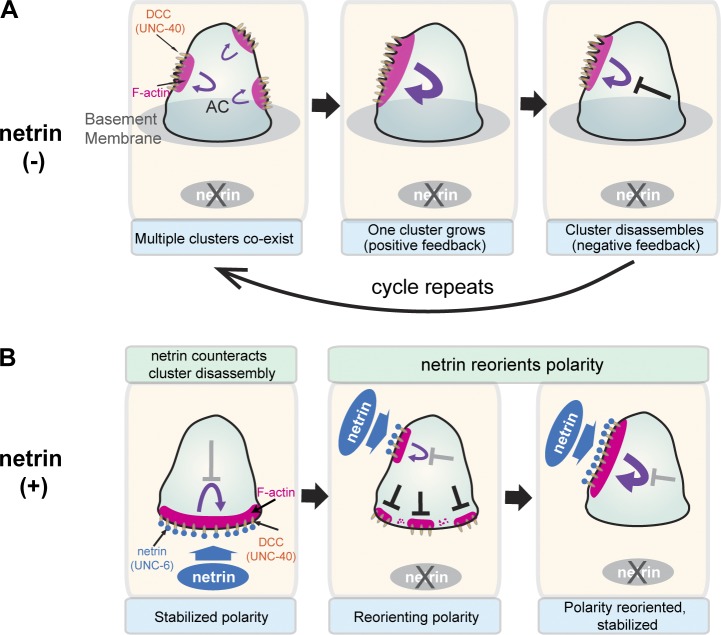Figure 9.
A model for UNC-40 (DCC)–mediated polarization toward UNC-6 (netrin). (A) In the absence of UNC-6, UNC-40 (DCC) undergoes oscillations in clustering (polarization). Positive feedback and competition mediates growth and dominance of a single UNC-40/F-actin cluster (middle). Cluster growth then leads to a delayed form of negative feedback (right, black cross) that breaks apart the cluster. After dissipation of negative feedback, the cycle repeats. (B, left) UNC-6 (netrin) in contact with UNC-40 (DCC) at the cell surface counteracts negative feedback, orienting and stabilizing polarity. (middle) Loss of the initial source of netrin leads to breakdown of polarity via negative feedback. (middle, right) A new source of netrin rapidly reorients and stabilizes polarity in a different location by countering negative feedback.

